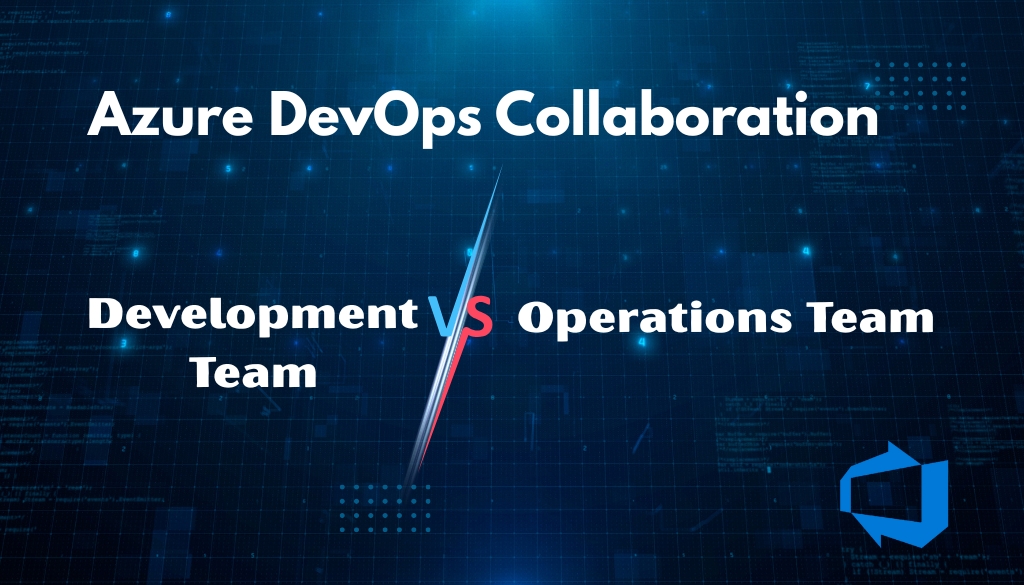Introduction
The present fast-moving IT industry needs software development organizations to achieve success through the performance of their development teams when working with their operations teams. The two teams operated independently because developers concentrated on coding, while operations teams managed deployment and system upkeep. The software update delivery process experienced multiple delays and communication breakdowns. The system encountered operational problems which resulted in decreased performance.
Microsoft developed Azure DevOps as a unified toolkit which unites development teams with operations teams to support continuous integration and delivery and team collaboration.
Organizations achieve rapid release cycles through Azure DevOps when they execute technical processes that produce high-quality products which meet their business goals. Learning modern DevOps practices exists for people who want to acquire these skills. The IntelliQ IT Trainings organization offers an Azure DevOps Training Program which provides practical skills for working in modern DevOps environments.
The Need for Collaboration Between Development and Operations
Before understanding how Azure DevOps enhances collaboration, it’s important to look at the challenges that existed before DevOps came into play.
1. Siloed Work Environments
Traditionally, developers would hand over code to operations teams without much context. This created confusion, delays, and frustration on both ends.
2. Inefficient Communication
Without shared tools or processes, development and operations teams often lacked visibility into each other’s work. This made issue tracking and resolution slow and inefficient.
3. Deployment Bottlenecks
Manual deployments and testing slowed down software releases. Teams struggled to keep up with the demand for faster delivery cycles.
4. Lack of Shared Accountability
Since both teams operated independently, failures were often met with blame rather than collective responsibility — negatively impacting team morale and productivity.
Azure DevOps was designed specifically to address these problems by introducing automation, transparency, and shared tools that bring both sides together under a single, unified platform.
What Is Azure DevOps?
Azure DevOps is a comprehensive set of development tools and services by Microsoft that supports the entire software development lifecycle (SDLC). It offers capabilities for planning, coding, building, testing, releasing, and monitoring applications — all in one place.
Key components of Azure DevOps include:
- Azure Repos – Version control using Git or Team Foundation Version Control (TFVC).
- Azure Pipelines – CI/CD automation for building, testing, and deploying code.
- Azure Boards – Agile project management with Kanban boards and tracking tools.
- Azure Test Plans – Integrated manual and automated testing.
- Azure Artifacts – Package management for sharing libraries and dependencies.
Together, these components help teams collaborate efficiently from planning to deployment and beyond.
How Azure DevOps Bridges the Gap Between Development and Operations
1. Unified Platform for Collaboration
Azure DevOps functions as a unified platform which enables developers and operations teams to collaborate effectively by serving as a single source of truth. Developers use Azure Repos to commit their code while operations teams run automated deployments through Azure Pipelines and project managers monitor progress with Azure Boards.
The shared workspace allows all team members to stay connected about project goals and deadlines and deliverables which helps reduce confusion while promoting open communication.
2. Continuous Integration and Continuous Delivery (CI/CD)
One of the most powerful aspects of Azure DevOps is its CI/CD pipeline.
- Continuous Integration (CI) allows developers to automatically build and test their code every time they push changes to the repository.
- Continuous Delivery (CD) ensures that these tested builds are automatically deployed to production or staging environments.
This automation removes manual intervention, reduces human error, and enables faster and more reliable software releases. The result? Development and operations teams collaborate more smoothly with minimal friction.
3. Shared Dashboards and Analytics
Azure DevOps provides users with real-time dashboard metrics that show build status and deployment frequency and test results and bug trends. The two teams access identical data sets which enables them to work more closely together and make faster choices.
The dashboards enable organizations to establish an environment of accountability through their open performance metrics which all stakeholders can view.
4. Enhanced Issue Tracking and Project Management
Through Azure Boards, both teams can manage workflows using Kanban boards, Scrum templates, and custom work items.
This means:
- Developers can track coding tasks and bug fixes.
- Operations can monitor deployment progress and infrastructure updates.
- Managers can visualize overall project progress and bottlenecks in real time.
By maintaining a shared project view, miscommunication is drastically reduced, and collaboration improves.
5. Version Control and Code Review Transparency
Azure Repos functions as a collaboration tool which enables version control to become the core of teamwork operations. Developers can work on features independently using branches, while operations teams can track code readiness through pull requests and merge histories.
The platform enables all code reviews and comments and approvals to take place within a single location which helps every team member from QA engineers to system administrators to track the current status of the codebase.
6. Infrastructure as Code (IaC)
Modern DevOps practices depend on Infrastructure as Code which means that infrastructure setup and configuration become automated through scripts and templates.
The operations teams working with Azure DevOps have the ability to create infrastructure as code through three different methods which include Azure Resource Manager (ARM) templates and Terraform and Ansible scripts. The development team needs to work together through script evaluation and enhancement which allows them to make simultaneous progress in code development and infrastructure improvement.
Developers need to follow the same process of version control and testing for infrastructure changes as they do for application code within a single unified workflow.
7. Automated Testing and Quality Assurance
Testing serves as a fundamental process which requires collaboration between different teams to achieve its goals. The integration of automated testing in Azure DevOps allows teams to run validation tests on code changes through CI/CD pipelines before deployment.
- The execution of unit tests happens through automated processes which developers establish for this purpose.
- QA teams employ Azure Test Plans to conduct both manual testing and exploratory testing activities.
- Operations teams reach production stability verification by using performance testing tools together with load testing tools.
The integrated testing environment establishes a stronger bond between development teams and operations teams, and quality assurance teams.
8. Faster Feedback Loops
Azure DevOps enables teams to receive immediate feedback through its built-in alert and notification system which helps them improve their work performance. The system delivers real-time alerts to designated team members whenever build failures or code review comments or deployment errors occur.
The system enables faster response times which results in quicker problem resolution and allows development and operations teams to work proactively instead of waiting to respond to issues.
9. Security and Compliance Integration
Security has become an essential part of modern DevOps — now often called DevSecOps.
Azure DevOps supports policy-based permissions, secure pipelines, and integration with Azure Active Directory (AAD). Both teams can enforce compliance checks, manage credentials securely, and ensure that deployments meet organizational standards.
This shared responsibility model enhances trust and collaboration between teams, as everyone is involved in maintaining security and compliance.
10. Cloud-Native Integration
Since Azure DevOps is part of the Microsoft Azure ecosystem, it offers deep integration with Azure Cloud services.
- Developers can build and test applications directly in Azure.
- Operations teams can deploy and monitor resources through Azure Monitor and Application Insights.
- Both teams can scale infrastructure dynamically based on workload demands.
This native integration eliminates compatibility issues and enables smooth end-to-end collaboration.
Real-World Impact of Azure DevOps on Team Collaboration
Companies across industries have reported significant improvements after adopting Azure DevOps.
Before Azure DevOps:
- Teams worked with disconnected tools.
- Manual processes led to deployment errors.
- Frequent miscommunication slowed delivery cycles.
After Azure DevOps Implementation:
- Unified dashboards improved transparency.
- Automated CI/CD reduced release time.
- Shared accountability fostered team harmony.
Organizations now deliver products faster, with fewer bugs, and at higher quality — all thanks to stronger collaboration between development and operations.
Building Your Azure DevOps Skills with IntelliQ IT Trainings
To fully leverage the benefits of Azure DevOps, professionals need hands-on training and real-world exposure. This is where IntelliQ IT Trainings, located in Ameerpet, Hyderabad, steps in as a trusted learning partner.
Why Choose IntelliQ IT Trainings?
- The curriculum provides students with a deep study of Azure Repos along with Pipelines Boards Artifacts and Test Plans.
- During their coursework students work on actual projects that require them to implement Continuous Integration and Continuous Deployment (CI/CD) together with cloud-based deployments and automated process execution.
- The training program is delivered by certified DevOps professionals who bring at least several years of experience in the field.
- Students who enroll in this training program will receive support for passing the Azure DevOps certification as well as resume development tools and interview simulation exercises.
- Students who need to secure their preferred positions within DevOps and cloud engineering sectors will receive personal support from the program.
Through the program, students gain technical skills alongside real-world projects, which prepare them to effectively combine development and operational responsibilities.
IT organizations around the world consider this skill essential for their operation.
Conclusion
The process of software development continues to evolve, and teamwork stands as the core element which determines project success. Azure DevOps provides development and operations integration tools that help organizations achieve operational transparency through automated systems and shared accountability.
Teams that use Azure DevOps obtain continuous integration and delivery capabilities along with real-time dashboard monitoring and version control, and infrastructure as code that enables them to speed up development processes while achieving superior software quality with reduced errors.
The Azure DevOps Training at IntelliQ IT Trainings in Ameerpet provides an ideal learning opportunity for professionals who want to advance their DevOps careers by mastering new collaboration and delivery methods for digital teams.






